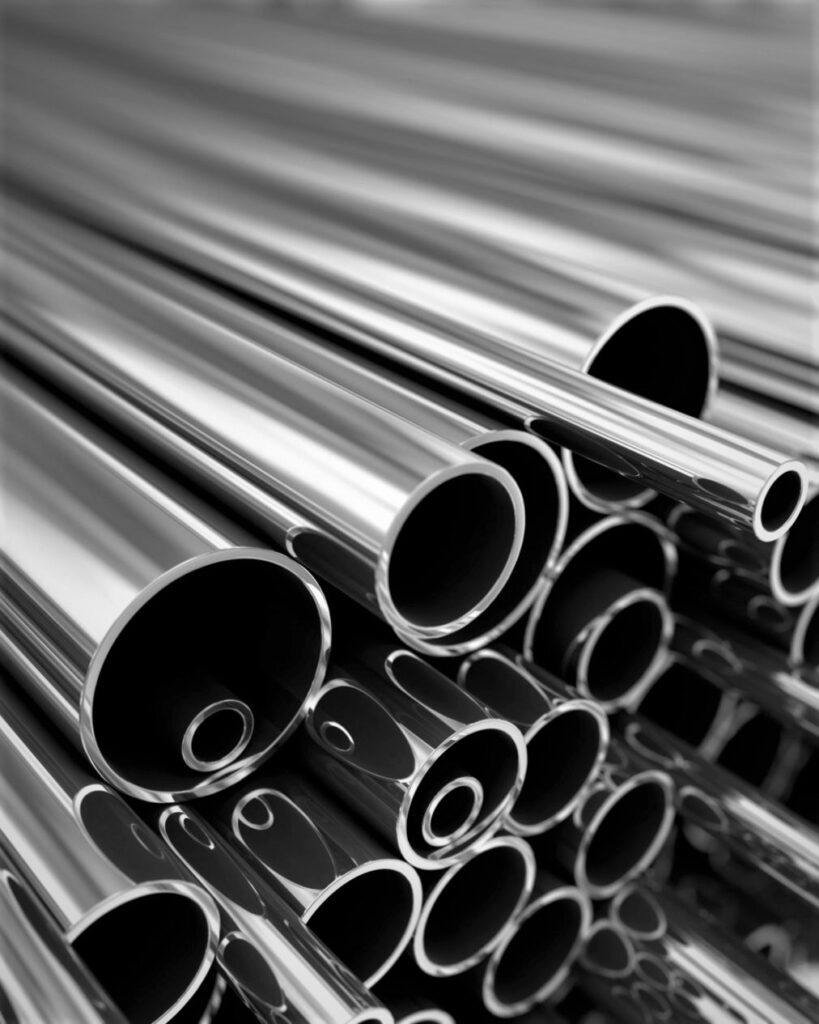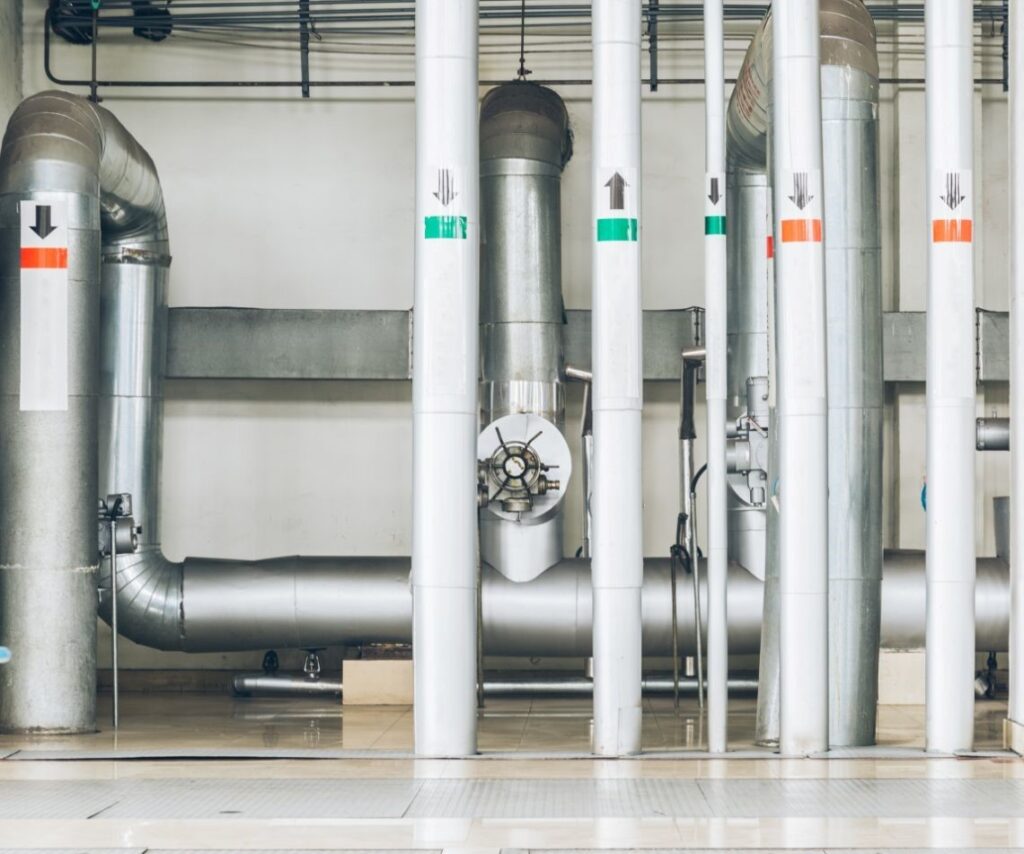Stainless Steel Tubes
Product
Stainless Steel Tubes
SWASTIK PIPE LTD with its extraordinary vision into future has started ERW stainless steel pipes production in 2008. Equipped with latest facilities, Swastik is committed to produce quality product in various sizes.
The Process commences with the formation of welded mother tube on the tube mill from prime quality stainless steel strips. The latest TIG multi electrode welding technique is employed for superior weld quality and 100% Fusion with argon purging, No filler metal added
These mother tubes are solution annealed at 1060 D 1100 D. C in continuous annealing furnace followed by immediate quenching to prevent chromium carbide precipitation
Annealing of mother tuber ensures:
- Removal of stress induced during tube forming and cold drawing
- Sufficient ductility and softness for cold drawing
- Transformation of the weld zone to austenitic nature
- Re crystallization of metallic grains to original form and thereby improving corrosion resistance


During annealing, scales are formed on the surface of the tubes. In order to remove these, the tubes are pickled by immersing into hot pickling solution made of nitric acid, sulphuric acid hydrofluoric acid.
The tubes are then coated with proper lubricant and then cold drawn over a drew bench:
1. To vary the metallurgical structure and restore the properties to the parent material
2. To achieve a tube having closer dimensional tolerances
3. To achieve a tube having closer dimensional tolerances
4. To produce tubing of smaller size and wall thickness.
5. To reorient the grain structure of weld portion with that of the parent material and
6. To remove/minimize the internal bead.
Drawing is followed by subsequent annealing and pickling to restore the properties of the entire tube to that of the parent material
The tubes are then passed to impart extra corrosion resistance. Thereafter every tube is electrically marked with material grade, size and manufacturing standard.
Manufacturing Process
STEP – 1
Material
Material received from SAIL / ESSAR Steel Ltd. / Lloyds / ISPAT or other any approved vendor. The steel shall be fully conformed to the API 5L / IS Standard Specification or as per Customer’s Specification. Testing/ Checking and Identification of Raw material shall be done as per API 5L / IS Standard Specification
STEP – 2
Edge Preparation & Milling
Edges of Coil / Skelp are form in edge breaking unit at initial stage so that perfect forming is achieved at welding area. Strip edges are given mill cut on both sides with edge milling machine to make the edges clean and square for perfect butt welding with high frequency. It shall be done before passing the strip to forming process.
STEP – 3
Forming of Pipe
Strip is passed in number of horizontal rolls after edge breaking and form cages supported by vertical rolls to receive an open edge round tube before welding. At the final stage of forming, rolls are provided with guide fins to have a proper proportionate gap and correct entry in welding roll
STEP – 4
High Frequency Welding
Finally the pipe shape performed after forming process, it passed through welding heads followed by the seam guide. The process of welding is based on ERW process. Electric welding shall be performed with a minimum welder frequency of 200 KHz. The fusion takes place through a roll assembly set for proper welding. Bead trimming shall be done as per API 5L / IS Standard or as per Customer Specification.
STEP – 5
Seam Normalizing
Normalizing is carried out on weld and HAZ after welding at the temperature of 8500 C to 9000 C. The temperature of seam normalizing is monitored by a non contact indicator having the digital display along with recorder. Equipment: Seam Normalizer Capacity : 500 KW
STEP – 6
Sizing
A set of sizing roll is ahead of cooling zone, water cooled pipe is passed through sizing rolls which control the Ovality and required dimensions, which is finally verified with measuring instruments as specified in relevant Specification.
STEP – 7
NDT Testing (Eddy Current)
Eddy current testing is the process of inducing small electrical currents in an electrically conductive article and observing the resultant reaction between the magnetic fields involved. Equipment: Eddy Current Flaw Detector (PC based)
STEP – 8
Finishing of the Pipes
Finished pipe are cut to required length by cut of carriage. Thereafter both ends of pipes are beveled by the end facer. Finally each pipe are checked for its Outer diameter, Inner Diameter, Thickness, Straightness, and length.
STEP – 9
Hydro Testing
After completing all the above process, all pipes transferred to the hydro testing bench. The test pressure shall be given to the pipes as per relevant specification or as per Customer Requirement.
STEP – 10
Galvanizing Process
Hydro Test passed pipes are send for Hot Dip Galvanizing confirming to various Indian Standard / International Standard.
STEP – 11
Marking
Marking on the pipes shall be paint stenciled as stipulated in API 5L/ IS Standard or as per the customer’s requirement, on each length of the pipe
Testing and Quality Control
Corrosion Test
Conducted only on special request by customer.
Flange Test
Confirm the cracks on the welded sections or on the base metal.
Eddy Current Test ASTME-426
This test is conducted to check the homogenates throughout the pipe length.
Radiographic Test
On demand, through approved inspection agency we can provide this test.
Bending Test
Conducted to check the leakage at different preserver by Hydrostatic and pneumatic pressure test.
Flattening Test
This test is conducted to check the strength of welded section. Welded section should bear this specified compression stress.
Reverse Flattening Test
To confirm that there are no cracks or blow holes on the welded section.
Flaring Test
(Flaring) test is performed to ensure the forming behavior of pipes. Pipe ends are expanded in a press to a diameter 1.2
APPLICATIONS & SPECIFICATION
Pharmaceutical
Chemical
Sugar
Metallurgical
Oil & Gas
Dairy & Food Products
Instrumentation
Pulp and paper
Boilers
Automobile
Heat exchanger
Railway Coaches
Fertilizer
Ship


